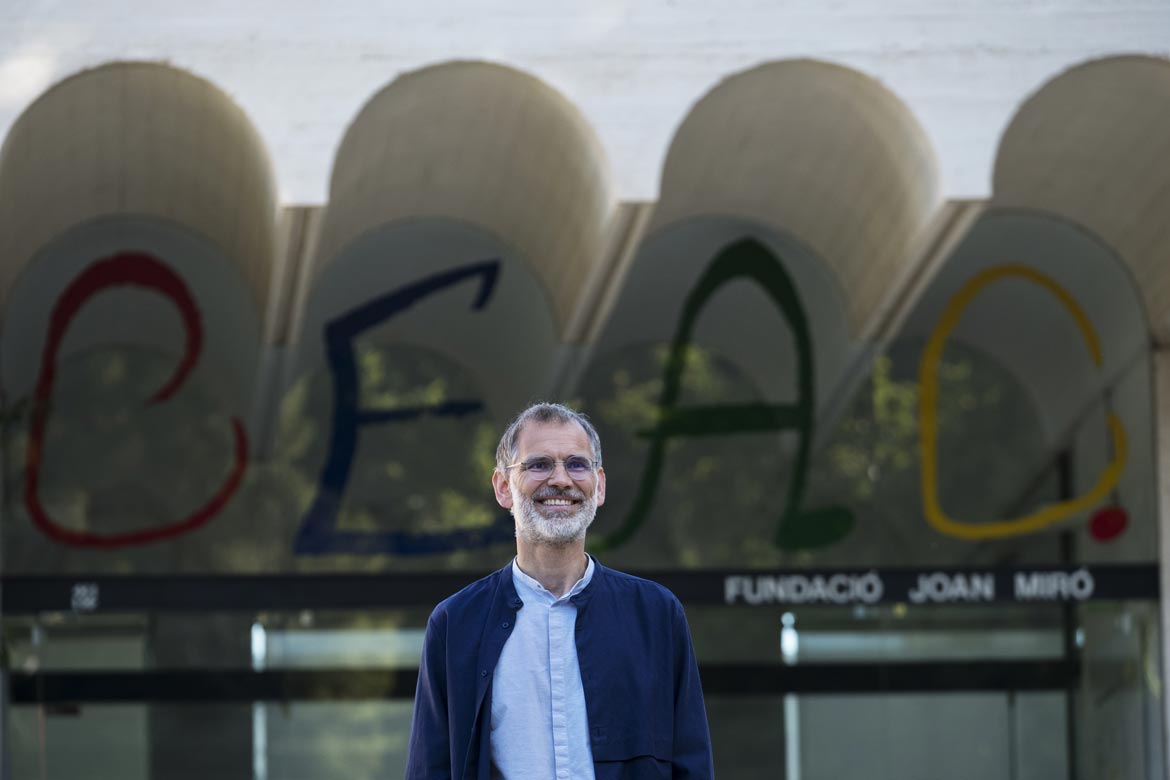Calidoscopi - Marko Daniel
4. KALEIDOSCOPE
Trial and error
Marko Daniel, director of the Joan Miró Foundation
In 1987, the British philosopher Richard Wollheim published Painting as an art, an unprecedented analysis of aesthetics based on the synthesis of philosophy, psychology, and art. A specialist on the link between the mind and emotions, specifically in the visual arts and painting, Wollheim reflected on the act of painting, the activity of being a painter in their studio, contemplating a scene, a fragment of the world, in order to transfer it to the canvas.
Gaze, eye, brain, analysis, memory, reflection, arm, hand, brush, paint, canvas. A continuous movement between this fragment of the world that the artist observes and studies, the raw material, the paint they have on their palette and that they move, mix, transfer to the canvas with restless, hesitant, precise, deliberate gestures that recreate the world they are contemplating. Their eyes jump constantly between the two realities before them: the scene and the painting; the painting and the world. Both are material, physical, with textures and colours, even though one might easily be regarded as a mere image. The act of painting turns on this circuit between the reality they are looking at and the reality they are painting, between the world and the canvas. It is, in short, a process of research and knowledge production.
The act of painting turns on this circuit between the reality they are looking at and the reality they are painting, between the world and the canvas

The most magnificent thing about art is that this process gives physical and visible form to an interrogation of the world that not only allows us to see it through someone else’s eyes, but also creates a new world that includes the transformative work of their own creation and makes it available to those who engage in a dialogue with the work, whether individually, alone, or socially and collectively. The work both is and creates discourse. In turn, it is offered up for analysis, study, criticism, expansion. Painting is a reflection on the world and is part of it.
One important dimension is that the knowledge that art produces is not theoretical, but the result of this interaction between observation and intervention: it does not exist purely in the gaze or reflection, but rather requires the hand, handling and matter. It is not the product of a library without a laboratory. I see this same relationship between theory and practice play out again and again in a variety of spheres, similarly to the university’s processes of knowledge and research.
These days, at the Joan Miró Foundation, we have been working on a proposal to change some of the works displayed in the first two rooms presenting the collection the artist gave to Barcelona and its citizens. We are familiar with both the ones that previously hung there and the ones taken out of storage for the new perspective. And yet there was no avoiding a process of trial and error.
It is necessary to see the paintings in the proposed position, look at them on the wall, to see what does and does not work. What might seem like an elegant solution on paper does not always end up being one on display in the rooms. The reality of the experience, of observing, of the comments exchanged by those present gave rise to the need to rethink. We swapped the positions of four canvases and vivid connections emerged between works on different walls, opening up new dialogues between the paintings and the space and subtly different ways of contemplating and understanding them.
Experience, reasoning, emotion. Feeling, thinking, and doing. You do not need to stretch your imagination far to see the relationship between painting, art, culture and university.
